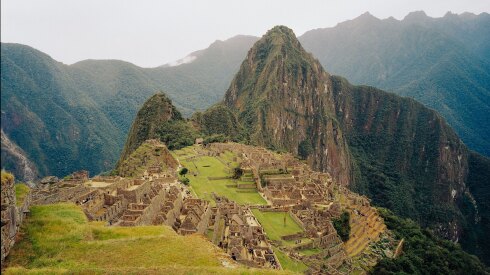The Metropolitan Museum of Art—or, commonly, the Met—is one of the world’s great museums, alongside the Louvre, the British Museum, and a handful of others. It would be easy to devote an entire week’s visit to the museum alone, and realistically you probably won’t get far beyond a few exhibitions and galleries at one shot. The Costume Institute’s temporary shows are always popular, while others will (like the museum itself) focus on a range of regions and periods—at any one time there may be temporary exhibitions on an Italian Renaissance painter, miniatures from Mughal India, and Polynesian carvings. The Temple of Dendur, a roughly 43' x 21' x 16' temple that dates to around 15 B.C.E. and was given by the government of Egypt to the United States in 1967, is one of the museum’s most photographed (and Instagrammed) works. The 34 period rooms, including a 12th-century cloister, English parlor and a Shaker “retiring” room, are among the museum’s other highlights. On summer evenings, site-specific installations make the rooftop terrace is a favorite place for drinks. The general admission of $25 for adults, $12 for students, and $17 for seniors is a suggested one for New York residents, as well as students from New York, New Jersey, and Connecticut. Whatever you pay also includes same-day entry to The Met Cloisters.
More Recommendations
Exotic Art in the Islamic Galleries
The Metropolitan Museum of Art reopened its renovated Islamic Art gallery in late 2011. The gallery features a diverse array of works from the Arab Lands, Turkey, Iran, Central Asia and Later South Asia. The eight-year, $50 million renovation covers 15 rooms of art that represents 1,500 years of Islamic culture. Browse Ottoman carpets, Persian miniatures, Quranic calligraphy, pottery, mosaics and more, all rich with detail. My favorite is a large replica of an elaborate 14th century Moroccan courtyard that represents the physical and spiritual center of a home or a mosque. The Met hired a team of 14 Moroccan artists from Fez - they lived in a rental in Jackson Heights, Queens and commuted to the museum every day. Paying close attention to historical detail and artisan traditions, they created a masterpiece. The mosaic itself is so intricate it often involved the use of tweezers to install small pieces.
Stately, Reverent Grandeur
The Damascus Room is a wood-paneled 18th century Ottoman reception room in the Metropolitan Museum’s gallery of Islamic art. It hails from an upper class Syrian home and was likely used in the winter to keep guests warm. During the Met’s enormous renovation of the Islamic galleries a few years ago, the 26-foot long Damascus Room was disassembled and painstakingly refurbished by a team of artisans. Upon its completion, it was put back together like an intricate puzzle. Visitors today are treated to a room rich with warm, burnished wood carved and inscribed with flowers and poetic verses; muted jewel colors; gold calligraphy; and floors of intricately inlaid marble. The beautiful room inspires hushed tones and contemplation. Take a moment to review and reflect.
The MET's French room displays
The Metropolitan Museum of Art is a must see in life. The exhibits blew me away. Here’s a snap of the golden rimmed furniture and walls of one of the white+gold themed French Renaissance living rooms.
A Supernatural Experience
This is the ceiling of a ceremonial house in a Kwoma village. The Kwoma are a group of people that live in New Guinea. Not much is known about them, but the mystery adds to the sensational effect that these wooden panels have when you are trying to figure out what they could be. These carvings represent supernatural beings that are used to protect homes. Thankfully, you don’t have to go all the way to New Guinea to see them up close. They are part of The Metropolitan Museum of Art’s permanent collection and can be seen in the Michael C. Rockefeller Wing. http://www.ruddywashere.com
The Metropolitan Museum
It’s one of the world’s most renowned museums for a reason. Founded 145 years ago, the Metropolitan Museum of Art, or simply the Met, has more than two million works spread out over five floors that spans two million square feet. To celebrate the centennial of the Museum’s Department of Asian Art, the Met is currently highlighting Asian artists through the remainder of the year with galleries, exhibits and a calendar filled with presentations, though a temporary exhibition covering another part of the world, Ancient Egypt Transformed: The Middle Kingdom—a collection of 230 works and groups from that transitional period, is among the season’s cultural not to be missed highlights.
























